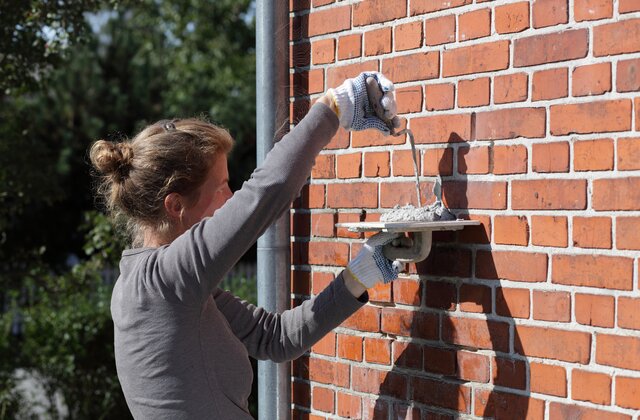
As a homeowner, it’s important to keep a close eye on the structural integrity of your property. One of the key areas to monitor is the brickwork and pointing. Repointing is a critical maintenance task that ensures the long-term stability of your home. When it comes to Heritage brick restoration in Sydney, it’s important to work with a professional contractor who has experience working with historic properties.
In this article, we’ll explore how to identify when your home needs repointing and what are the signs of damage.
What Is Repointing?
Repointing is the process of removing old and damaged mortar from the joints between bricks and replacing it with new mortar. Mortar is a crucial component in any brick structure as it holds the bricks together and provides stability. Over time, weather conditions and other factors can cause mortar to weaken and crumble, leading to structural instability. Repointing helps to restore the strength and stability of the brickwork, extending the life of the structure.
How To Identify When Your Home Needs Repointing?
The first step in identifying whether your home needs repointing is to conduct a visual inspection. Here are some signs that may indicate the need for repointing:
- Crumbling Or Cracking Mortar: Mortar can become damaged over time due to exposure to harsh weather conditions or general wear and tear. If you notice cracks or crumbling in the mortar, this is a sign that it’s time to repoint.
- Loose Bricks: Loose bricks are a common sign of failing mortar. When the mortar holding the bricks together starts to deteriorate, the bricks can become loose and shift out of place. This can lead to further damage and instability in the structure.
- Water Damage: Water can cause significant damage to brickwork over time. If you notice water stains or damage on your walls, this could be a sign that the mortar is no longer protecting the bricks from moisture.
- Uneven Joints: Mortar joints should be uniform in size and depth. If you notice that the joints between your bricks are uneven, this could be a sign that the mortar is failing and needs to be replaced.
- Vegetation Growth: If you notice vegetation growing in between the bricks, this could be a sign of deteriorating mortar. As the mortar breaks down, it can provide a space for weeds and other plants to take hold.
- Drafts Or Air Leaks: Failing mortar can lead to drafts and air leaks in your home. This can make it difficult to regulate the temperature in your home and can result in higher energy bills.
The Process Of Repointing
If you’ve identified signs of damage that suggest your home needs repointing, it’s important to take action quickly to avoid further damage. The process of repointing typically involves the following steps:
- Assessment: A professional contractor will assess the extent of the damage and determine the appropriate course of action. They will consider factors such as the type of mortar used, the age of the structure, and the climate in your area.
- Preparation: The area around the brickwork will be protected to prevent damage during the repointing process. This may include covering nearby plants, furniture, and other items.
- Removal Of Old Mortar: The old mortar will be removed from the joints between the bricks using specialized tools. This process must be carried out carefully to avoid damaging the bricks.
- Cleaning: Once the old mortar has been removed, the area will be cleaned to remove any debris or dust.
- Application Of New Mortar: The new mortar will be applied to the joints between the bricks using a trowel. The contractor will ensure that the mortar is applied evenly and matches the existing mortar in color and texture.
- Finishing: Once the new mortar has been applied, the contractor will finish the surface to create a seamless and uniform look.
